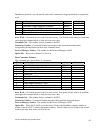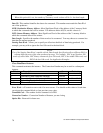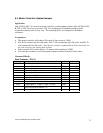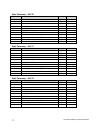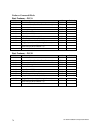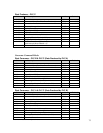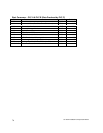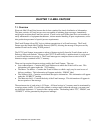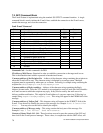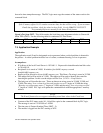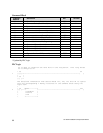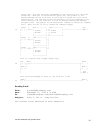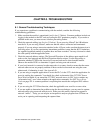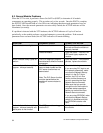
CTI 2572 Installation and Operation Guide
77
CHAPTER 7. E-MAIL FEATURE
7.1. Overview
Electronic Mail (E-mail) has become the de-facto standard for timely distribution of information.
The latest versions of E-mail servers are even capable of initiating pager messages, immediately
notifying the recipient that E-mail has arrived. E-mail can be used in the plant floor environment, to
notify maintenance of equipment breakdowns, inform material handling of parts requirements, and to
alert production personnel of special process requirements.
The E-mail Feature allows PLC logic to initiate transmission of an E-mail message. The E-mail
Feature uses the Simple Mail Transfer Protocol (SMTP), allowing the message to be processed by
standard E-mail servers using TCP/IP protocol.
The 2572 E-mail feature incorporates a subset of features typically found in E-mail clients such as
Eudora or Microsoft Outlook. However, the CP2572 E-mail facility is unidirectional; it can be used
to send E-mail but not to receive it. The E-mail messages are composed from a series of ASCII
character strings contained in PLC V memory.
There are four required character strings used by the E-mail Feature. They are:
• L
IST OF RECIPIENTS – Contains the E-mail Addresses to which the E-mail will be sent. This
information will appear under the “TO” heading.
• The R
EPLY TO address – Contains the E-mail Address to which a reply may be sent in case of
delivery problems. This information will appear under the “FROM” label.
• The S
UBJECT field – Contains user defined descriptive information. This information will appear
under the “SUBJECT” heading
• The M
ESSAGE field – Contains the body of the E-mail message. This information will appear in
the text portion of the message.
The maximum size of each string is 512 bytes. All literal strings in V memory must be terminated by
a carriage return (ox0D). If you wish to embed a carriage return within the message, you must enter
two backslash characters “\\“ instead of the carriage return. The heading labels “TO”, “FROM”, and
“SUBJECT” will be generated by the protocol manager.



